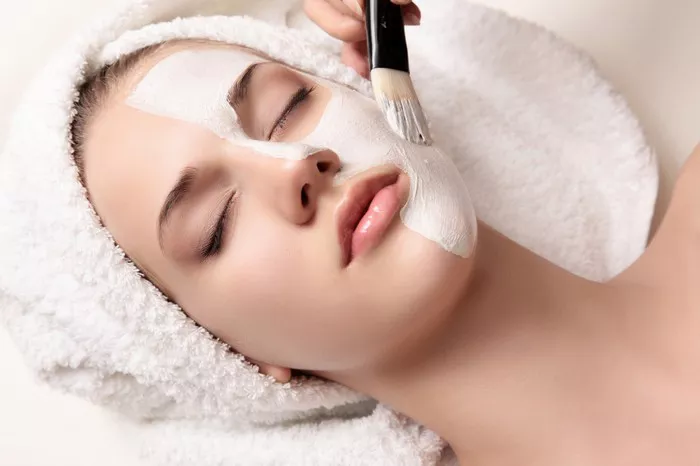When it comes to skincare and wound healing, Vitamin E is often a go-to ingredient in many creams and ointments. This powerful antioxidant has been praised for its potential benefits in promoting skin health, reducing scarring, and aiding in wound healing. But does Vitamin E actually help heal wounds? This is a question that has been debated in the medical and skincare communities for years.
In this article, we will take an in-depth look at Vitamin E, how it interacts with skin cells, and its potential role in wound healing. By the end, you’ll have a clearer understanding of whether or not Vitamin E can truly support the healing process and help improve the appearance of scars.
What Is Vitamin E?
Vitamin E is a fat-soluble antioxidant that plays a key role in protecting cells from oxidative stress. It is found in many foods, including nuts, seeds, vegetable oils, and leafy greens. As an antioxidant, Vitamin E helps neutralize free radicals, which are unstable molecules that can damage cells and accelerate the aging process. In addition to its antioxidant properties, Vitamin E is also known for its moisturizing and anti-inflammatory effects.
There are several forms of Vitamin E, but the two most common are:
Tocopherols: These are the most commonly found forms of Vitamin E in skincare products.
Tocotrienols: These forms are less common but are also believed to have powerful antioxidant effects.
In the context of wound healing, Vitamin E is often used for its ability to promote skin repair, reduce inflammation, and improve the overall health of the skin. Let’s explore how Vitamin E interacts with the skin and whether it truly helps speed up the healing process.
How Vitamin E Affects Wound Healing
Wound healing is a complex process that involves several stages, including inflammation, tissue formation, and remodeling. For a wound to heal properly, the skin must go through these stages efficiently, with minimal scarring. Vitamin E is thought to play a role in several aspects of wound healing.
1. Reducing Inflammation
One of the first stages of wound healing is inflammation, where the body’s immune system works to clean and protect the wound from infection. While inflammation is essential for the healing process, excessive inflammation can delay healing and contribute to scarring. Vitamin E is known for its anti-inflammatory properties, which may help reduce prolonged inflammation in the affected area.
Studies have suggested that Vitamin E can help modulate the inflammatory response by inhibiting certain enzymes that trigger inflammation. By reducing excessive inflammation, Vitamin E may help the wound heal more efficiently.
2. Enhancing Collagen Synthesis
Collagen is a protein that provides structure and strength to the skin. During the wound healing process, collagen plays a crucial role in repairing and regenerating tissue. However, too much collagen production can lead to scarring, while too little collagen can result in poor wound closure.
Vitamin E is believed to promote the synthesis of collagen in the skin. It does this by interacting with skin cells called fibroblasts, which are responsible for producing collagen. By supporting the production of collagen, Vitamin E may help the wound close properly and reduce the appearance of scarring.
3. Protecting Skin Cells from Oxidative Damage
When a wound occurs, the skin is often subjected to oxidative stress due to the inflammatory response and increased production of free radicals. These free radicals can damage the skin cells and delay the healing process. As an antioxidant, Vitamin E helps protect skin cells from oxidative damage, which can enhance the skin’s ability to heal and regenerate.
Vitamin E’s antioxidant properties are especially beneficial when used topically on the skin. By neutralizing free radicals in the wound area, Vitamin E helps maintain the integrity of skin cells and promotes faster healing.
4. Moisturizing the Skin
Proper hydration is essential for wound healing. Dry skin can impede the healing process, leading to cracked or irritated skin. Vitamin E is known for its ability to lock in moisture and keep the skin hydrated. When applied to a wound, Vitamin E can provide a protective barrier that helps prevent moisture loss, promoting a more favorable environment for healing.
Moisturized skin is also more flexible, which can help reduce tension on the wound site and minimize the formation of scars. This makes Vitamin E a popular ingredient in moisturizing creams used for scar treatment and wound care.
The Role of Vitamin E in Scar Prevention
While Vitamin E is often used in wound healing, it’s also widely known for its ability to reduce the appearance of scars. Many people use Vitamin E oils or creams after their wounds have healed, hoping to fade any lingering scars.
Does Vitamin E Prevent Scarring?
There has been some controversy over whether Vitamin E truly prevents scarring. While Vitamin E can help reduce inflammation and promote proper healing, its ability to prevent or minimize scars is less clear. Some studies have shown that Vitamin E can improve the appearance of scars by softening them and helping them fade over time, while other studies have found little to no effect.
One study published in the “Journal of the American Academy of Dermatology” found that applying Vitamin E to scars did not result in a significant reduction in scarring. In fact, some people may experience an allergic reaction to Vitamin E, which could cause skin irritation and worsen the appearance of scars. Therefore, while Vitamin E may offer benefits for wound healing, its effectiveness in preventing or minimizing scars remains inconclusive.
How Vitamin E Might Help with Scar Appearance
Despite the mixed research on its scar-reducing effects, Vitamin E may still offer some benefits when used after a wound has healed. Here are some ways Vitamin E may help improve the appearance of scars:
Softening the Scar Tissue: Vitamin E may help soften scar tissue, making it less noticeable and more flexible.
Fading Hyperpigmentation: Vitamin E’s antioxidant properties may help reduce hyperpigmentation (dark spots) in the skin around the scar, leading to a more even skin tone.
Improving Skin Texture: By promoting collagen production and moisturizing the skin, Vitamin E may help improve the overall texture of scar tissue, making it smoother and less raised.
When to Use Vitamin E for Wound Healing
While Vitamin E can be beneficial for both wound healing and scar prevention, it’s important to use it at the right time in the healing process.
1. During the Early Stages of Wound Healing
Vitamin E is generally not recommended during the initial stages of wound healing, as applying it to an open wound could potentially cause irritation or delay healing. Instead, it’s best to focus on keeping the wound clean and protected during the first few days. Once the wound has begun to heal and the skin is no longer broken, you can consider introducing Vitamin E into your skincare routine.
2. After the Wound Has Healed
Once the wound has closed and the initial healing phase is complete, Vitamin E can be used to help with the scar healing process. Applying Vitamin E oil or cream to the scar can help improve its appearance by softening the tissue and potentially reducing hyperpigmentation. This is typically done after the wound has completely healed and the skin has re-epithelialized.
3. As a Preventive Measure
If you are prone to developing scars, using Vitamin E as a preventive measure might be helpful. Massaging Vitamin E oil into areas prone to scarring can help keep the skin moisturized and may aid in the healing process. However, it’s important to note that Vitamin E is not a guarantee that scarring will not occur.
Potential Risks and Side Effects of Vitamin E
While Vitamin E is generally considered safe for most people, there are some potential risks and side effects to be aware of, especially when using it for wound healing and scar treatment.
1. Allergic Reactions
Some people may experience an allergic reaction to Vitamin E, which can lead to redness, itching, swelling, or a rash. If you have sensitive skin or are prone to allergies, it’s a good idea to do a patch test before applying Vitamin E to a large area of skin.
2. Skin Irritation
In some cases, Vitamin E may cause skin irritation, especially when used in high concentrations. If you notice any irritation or discomfort after using Vitamin E, discontinue use and consult a healthcare provider.
3. Hypervitaminosis E
Excessive use of Vitamin E can lead to a condition called hypervitaminosis E, where the body accumulates too much Vitamin E. This is more likely to occur if you are taking Vitamin E supplements in addition to using topical Vitamin E products. Symptoms of hypervitaminosis E include nausea, diarrhea, and fatigue. To avoid this, it’s best to use Vitamin E products in moderation and follow the recommended guidelines.
Conclusion
Vitamin E is a powerful antioxidant that plays a crucial role in wound healing and skin health. Its anti-inflammatory, moisturizing, and collagen-promoting properties make it a popular choice for improving wound recovery. While Vitamin E can help reduce inflammation, protect skin cells, and promote collagen synthesis, its effectiveness in preventing or minimizing scars remains uncertain.
When used properly and at the right time, Vitamin E may offer benefits for scar healing and the overall appearance of scars. However, it’s important to use Vitamin E cautiously, especially during the early stages of wound healing, to avoid irritation or other side effects.
If you have a wound or scar that you are concerned about, it’s always a good idea to consult with a healthcare provider to determine the best treatment options for your skin type and specific needs.
Related Topics



































